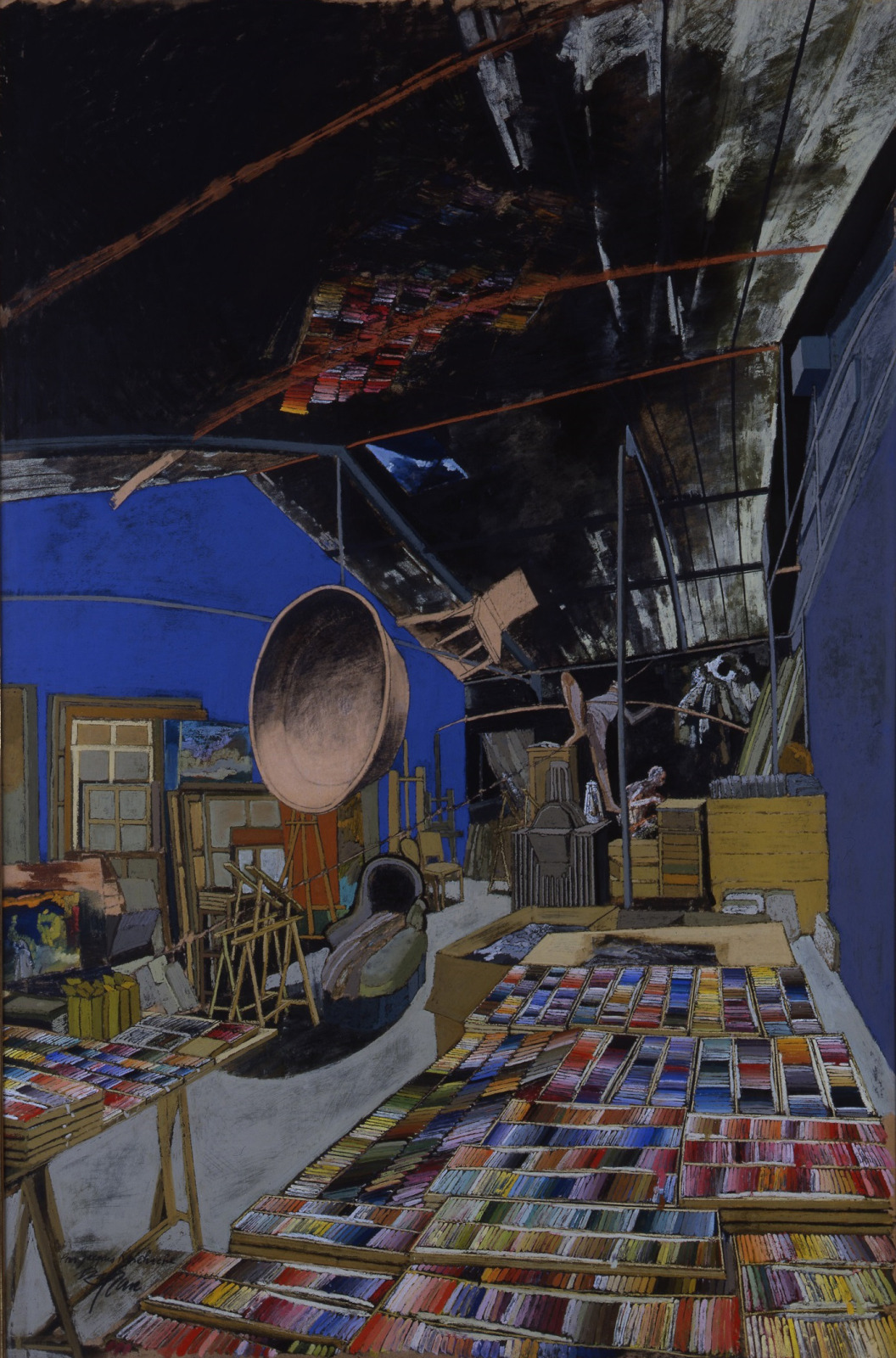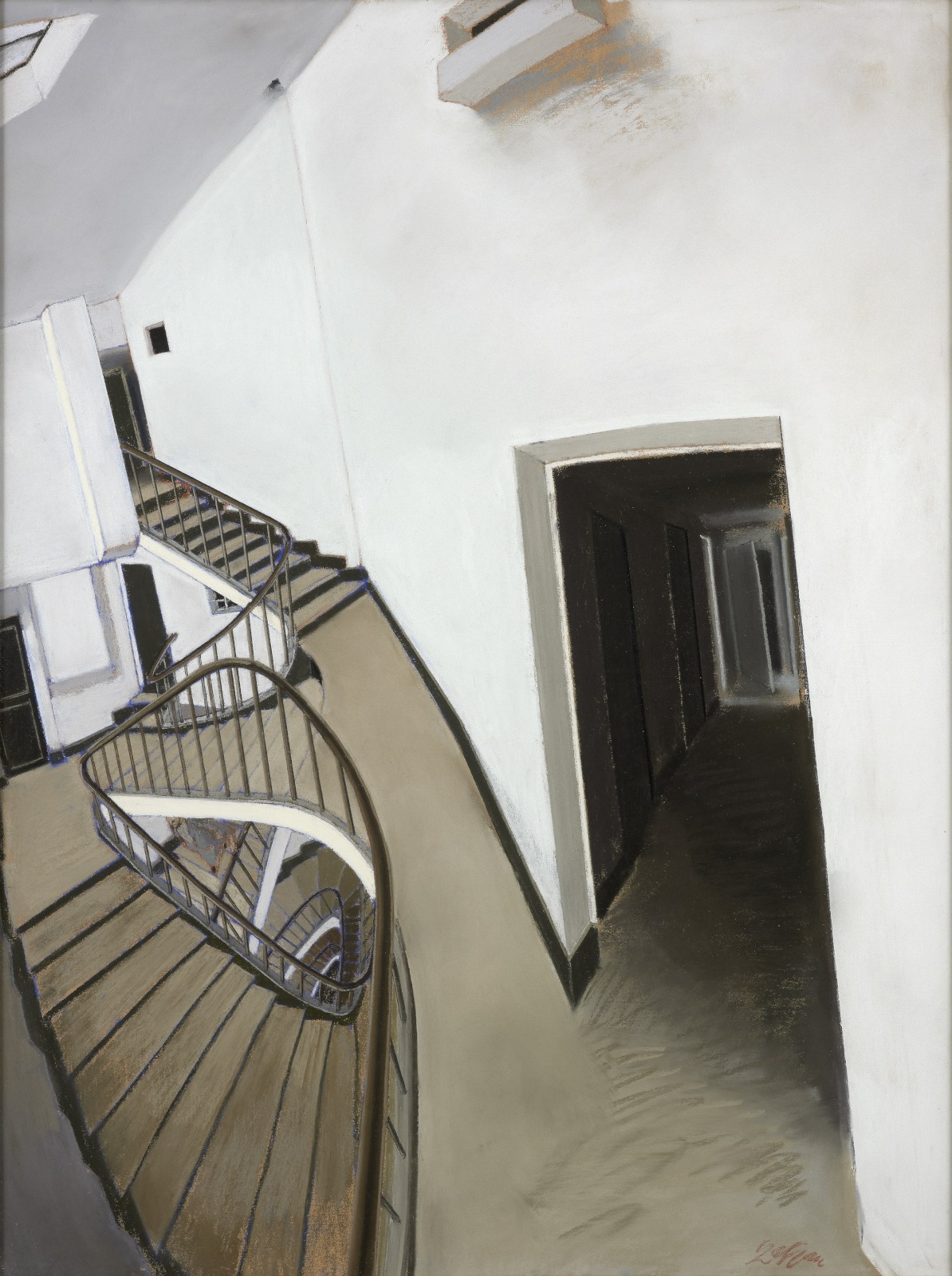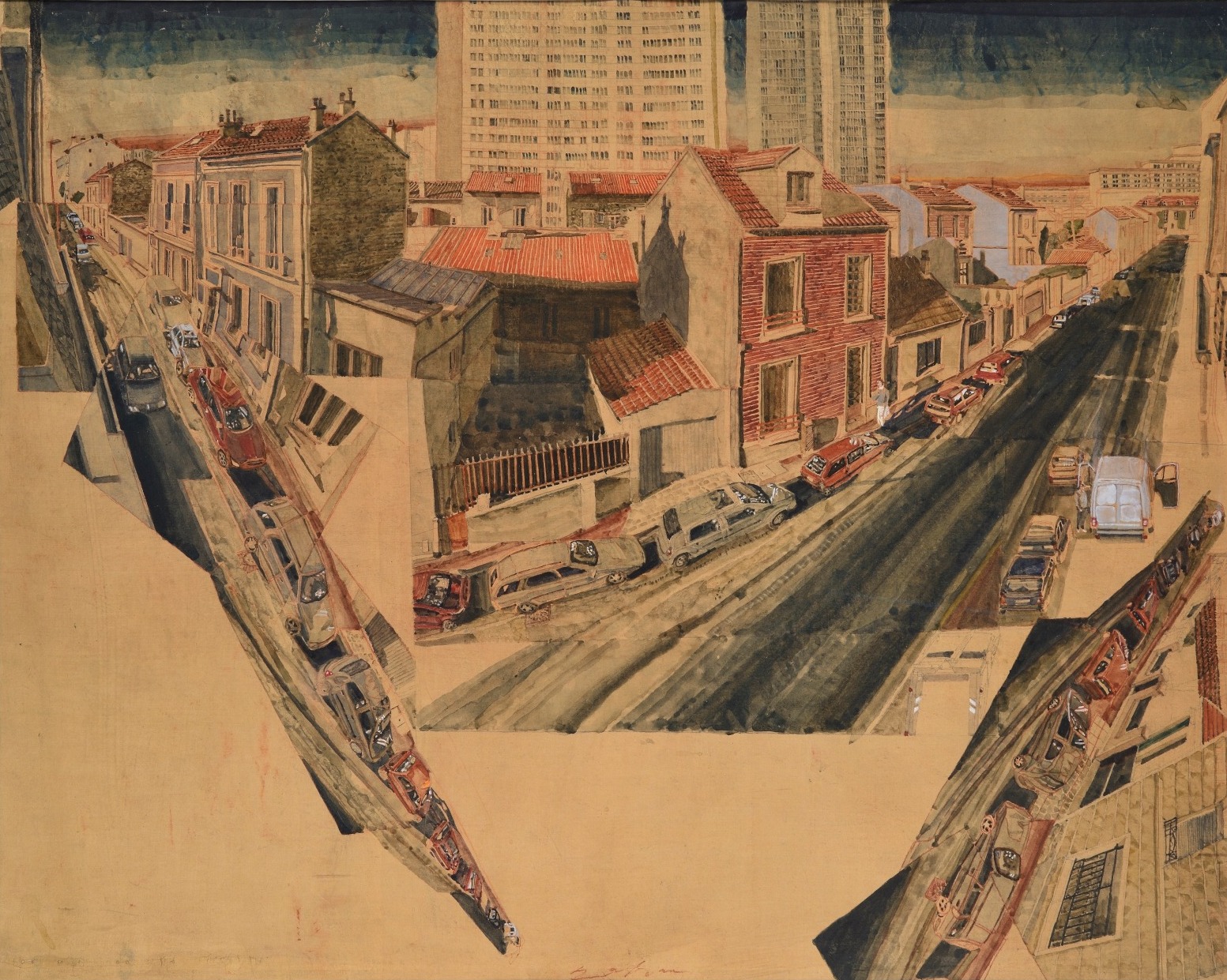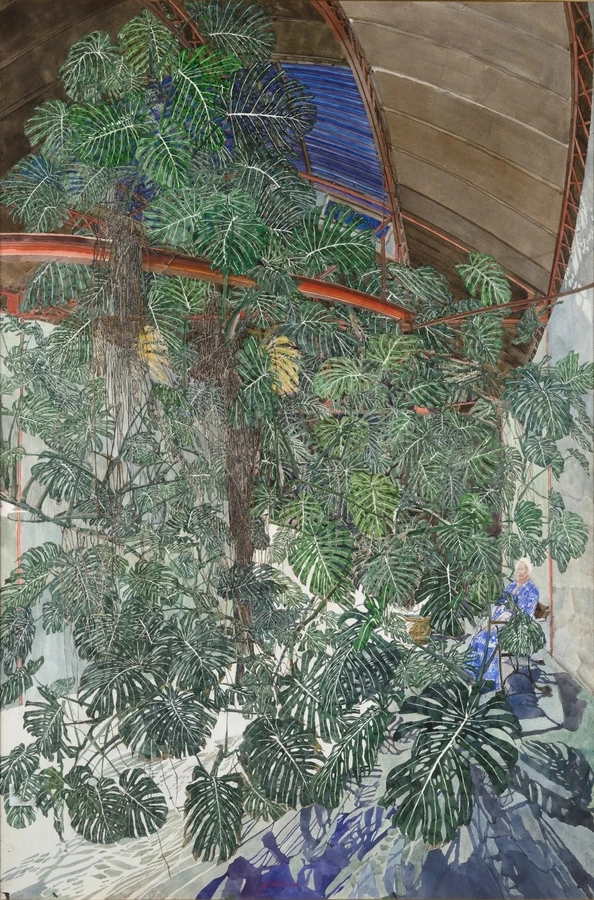Sam Szafran. Obsessions of a painter

Feuillages (1986-1989)
Jean-Louis Losi / Collection particulière © Sam Szafran, ADAGP, Paris, 2022
Sam Szafran’s journey is quite unique. Born into a Polish Jewish family, he saw the world rocked to its foundations by war. He was robbed of his childhood. Drawing and painting grounded him in a reality which a life overshadowed by the perils of history had denied him. Self-taught and eager to learn, he clung to his creativity in his own private world. Behind the closed doors of his studio, Sam Szafran doggedly pursued the obsessions which inhabit his work. He did not engage with the debates of his day. Rather he chose figurative art in an era which had either abandoned it or taken it in quite different directions. A contemporary of the last avant-garde movements, the painter remained aloof, while observing them closely. He developed a taste for techniques which were no longer fashionable, such as pastel and watercolour.
Szafran developed a vocabulary which faithfully expressed his vision of the world in his immediate surroundings: studios reflecting his mental states, spiral staircases becoming labyrinths, spaces overrun by vegetation, and boxes of pastels transformed by effects of perspective.
Three years after his death, this exhibition explores his complete body of work.
Chaos tamed
The rue de Crussol studio
Sam Szafran’s Paris studios and the studio which he bought on rue Vincent Moris in Malakoff represented more than just a series or a subject. This theme running through the artist’s entire work was central to his everyday life and became an exercise in introspection. These spaces which he examined, scrutinised and analysed provide multiple facets of an observation which takes, using pastel sticks on paper, the forms of a constantly renewed representational art.

L’atelier de la rue Crussol, février 1972.
Pastel sur calque contrecollé sur carton, 104 x 75 cm
© Sam Szafran, ADAGP, Paris 2022 / Photo Lala Joubert
The studio on rue de Crussol, a small space lent to him for a while by the American painter Irving Petlin, was transformed into a stage for his creations, which he described in great detail: «You can see motifs which will recur in different series: the backs of canvases on stretchers along the walls (by Petlin in this instance), the suspended tub as a tribute to Degas (La Bassine), the coal stove, a central feature of this surrealist decor, boxes of pastel sticks and À La Gerbe pastel sample books reflected in mirror image in the badly sealed skylight, the padded chaise longue which I found at Madeleine Castaing’s, where a friend is resting…»
The Bellini print workshop
In 1970, Szafran and some associates took over a former lithographic atelier at 83 rue du faubourg Saint Denis. Lithographs by the poster artists Steinlen, Chéret and Lautrec were printed here in the late nineteenth century and, subsequently, cinema posters. This location inspired Szafran’s major series of workshop views, which he called The Bellini print workshop as a tribute to the Venetian Renaissance painter
Unlike the rue de Crussol studio works, which are variations from the same view point, this series invites the viewer to move around the space gradually from the ground floor to the basement. Szafran focuses in close detail on the skylight, printing presses, tools, baths and lithography stones, as well as friends and workers going about their activities.

Imprimerie Bellini, 1972.
Pastel sur calque contrecollé sur carton, 139 x 100 cm.
Collection particulière
© Sam Szafran,ADAGP, Paris, 2022. Photo Galerie Claude Bernard / Jean-Louis Losi
The influence of cinema is clear as the artist embraces the space by capturing different perspectives with a sort of “tracking shot” approach. «My first contact with art was through cinema,» stated the artist, who cites directors Sergei Eisenstein, Orson Welles, and Alfred Hitchcock among his role models.
The vertigo of space
The rue de Seine staircase
The poet Fouad El-Etr asked Szafran about the drawings which he produced in the early 1970s for his poetry magazine La Délirante: «Let’s look at the theme of staircases, for example, the staircase at 54 rue de Seine. Do you remember the day you came and pinned the first sketches on the sloping walls of my attic room, like skeletons, with a banister for a spine, to try to come to grips with this new model and to choose the best layout for a cover illustration?»
The staircase was drawn in charcoal, following the traditions of perspective drawing quite closely. This work, however, was the precursor to increasingly complex formal experiments, which the artist viewed almost forty years later in terms of the regard: «I always believed, as Alberto Giacometti used to say, that reality is much more powerful than utopia, dreams or fantasy. What was important for me was less to achieve a successful work than to give people the opportunity to look a little more closely. An artist’s role was to provide an alternative regard, a regard that offers an alternative view.»
Staircases – Distortions of vision
The staircase motif is central to Szafran’s work; it is at the core of his formal interests, and has its roots in his personal history. The artist recalled being dangled over the stairwell as a child by an uncle, who threatened to let go of him. He stressed: «Nobody had done staircases before me, and I have always lived in staircases. It is the territorial, physical aspect, survival, small gangs of kids ruling their patch.»

Escalier,1974.
Pastel sur papier, 78 x 58 cm.
Collection particulière
© Sam Szafran, ADAGP, Paris, 2022
In order to capture distortions of vision – a key obsession – Sam Szafran broke with the tradition of perspective drawing by distorting space. He transcribed the feeling of vertigo and falling by using anamorphosis and the whiplash dynamic of the serpentine line which he borrowed from Italian painters. Employing this virtuoso technique, in pastel initially and then in watercolour, he constantly sought to hone the precision of the images shaped by his regard.
Urban landscapes
«And then there is the street. I am becoming more and more interested in urban landscapes. I have noticed that there are many things to do in painting which have not yet been done.»

Sans titre (Malakoff), 2014.
Aquarelle sur soie, 72 x 89 cm.
Galerie Claude Bernard
© Sam Szafran, ADAGP, Paris, 2022. Photo Galerie Claude Bernard / Jean-Louis Losi
In the early 1990s, the artist pursued new experiments around exterior views which gradually appeared in the windows of the staircases he depicted. From this point, Szafran worked almost exclusively in watercolour on silk after being introduced to this approach by the Chinese artist Sze To Lap. This technique made it possible to produce ever larger compositions in which he attempted to bring space, time and motion together simultaneously. Like a whirlwind of images, the various fragments of the painting become integral components of a larger whole in motion. Old familiar locations, memories, things both real and unreal, and anecdotal and concrete details become the elements making up the painting.
Invasion from within
Greenhouse with foliage
In the spring of 1966, the Chinese painter Zao Wou-Ki lent Sam Szafran his studio in Paris. The space concealed a decisive discovery: “I was totally incapable of working there: I was fascinated by a magnificent philodendron gleaming under the skylight, which I found it impossible to draw. This impotence became an obsession”. For half a century, the artist returned tirelessly to the task of depicting plants, mostly philodendron Monsteras and aralias. The foliage offered an opportunity for images of proliferation, although Szafran ensured that he described each one «individual» accurately.
This proliferation of plants on paper falls into several groups. The first of these combines pastels and charcoal in contrasting black and blue tones and does not engage with naturalism. This was followed by the small blue foliage series in which the leaves themselves are the focus of compositions based on repetition and multiplication. Only a human figure, usually Lilette in her Japanese coat, provides a breathing space in these extremely dense paintings
Studio with foliage
«Then he suddenly moved into the world of vegetation,» observed the American James Lord, «Plants! Infinite juxtapositions of barely distinguishable pulsating leaves in all their perfection and profusion, with each leaf illuminated in the vibrant air with horticultural precision.» In order to create an even greater profusion, Szafran came up with the idea of ever bigger formats, which could not be created using pastels. He turned to watercolour, which could be employed on larger-scale works and offered new scope for technical experimentation.

Feuillages (1986-1989).
Aquarelle sur papier, 149 x 99 cm.
Collection particulière
© Sam Szafran, ADAGP, Paris, 2022 / Jean-Louis Losi
However, he did not abandon pastels and set himself the challenge of combining the two, juggling wet with dry. Szafran painted in his studio the plants which became enormous, both in reality and on paper. Until the end of his life, he returned to plant motifs in an enduring «nod to Matisse», his predecessor, who had a taste for large ornamental plants in his studio.
